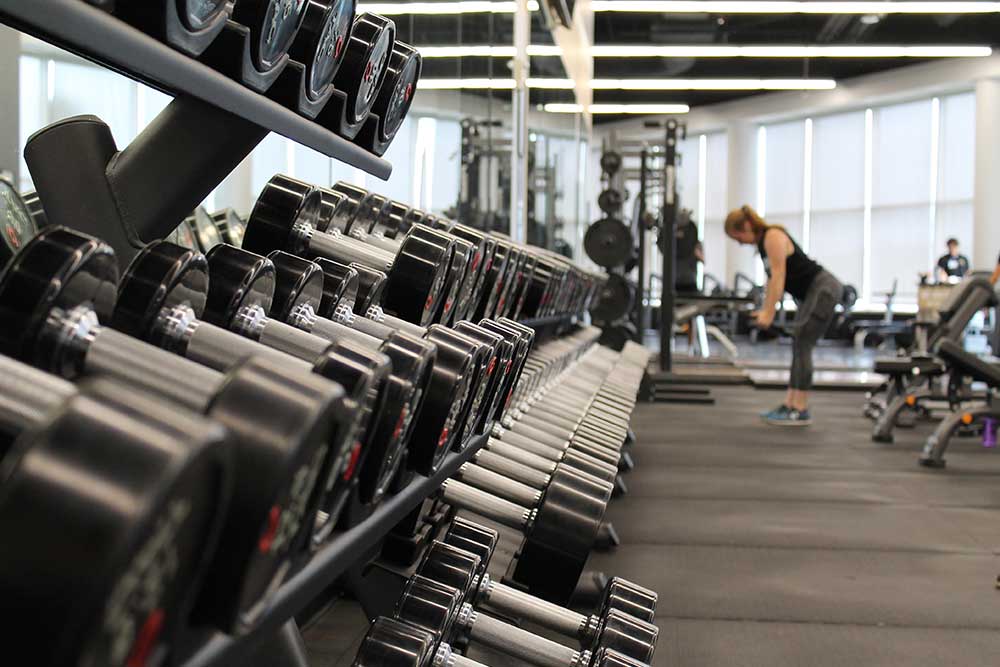Manage Chronic Pain with Exercise

Julia Basso, PhD
Chronic pain is a serious and debilitating condition for many people. It affects more Americans than diabetes, heart disease and cancer combined (American Academy of Pain Medicine). An initial incident such as a broken bone or physical injury, surgery, infection, or traumatic brain injury can initiate chronic pain. Or, it may be a result of an ongoing condition such as arthritis or cancer. Individuals who suffer from chronic pain may not “look” sick. However, they often suffer in silence and can experience both physical as well as psychological symptoms from this persistent issue.
For example, many pain patients often suffer from problems of fatigue, sleep, memory, and mood or physical issues such as irritable bowel syndrome or numbness of the extremities. One chronic pain condition, known as fibromyalgia. Fibromyalgia is a disorder characterized by widespread musculoskeletal pain, with 80-90% of diagnosed cases being women. The underlying etiology of many chronic pain conditions is unknown. These pain disorders are therefore characterized as medically unexplained physical symptoms (MUPS). Unfortunately, patients suffering from pain may often be sent home from the doctor’s office with no answers.
Chronic Pain and the Brain
Why does pain persist in the absence of acute physical (or psychological) stress and why is chronic pain a MUPS? Surprisingly, these questions remain a mystery; however, the answer most likely has something to do with the brain. The pain system is quite complex. We are just beginning to understand how the brain controls our sense of pain. Pain sensors, known as nociceptors, exist all over (and inside!) the body. These nociceptors send signals to the brain where the actual pain information is processed. Researchers and physicians now realize that chronic pain may actually be a result of a dysregulated central nervous system.
Pain management, of course, is a challenging issue. For chronic pain issues, physicians may prescribe drugs such as nonsteroidal anti-inflammatory drugs (NSAIDs) or opiate pain killers. As Brady Dennis in The Washington Post describes in his 2015 article, NIH: More than 1 in 10 American adults experience chronic pain, “The prevalence of chronic pain in America lies at the root of an ongoing epidemic of prescription pain killers… The [Center for Disease Control] estimates that roughly 44 people die each day in the United States as a result of a prescription opioid overdose.” Besides drugs, alternate options exist for dealing with chronic pain. Physical activity, of course, may be the last thing that you want to do when you are in pain; however, research indicates that exercise can actually help to alleviate the pain you feel.
Using Yoga To Manage Chronic Pain
In her newest blog post , Jessica Martin, a friend of mine and long-time sufferer of chronic pain, writes about how she uses yoga to manage her pain naturally. Though she notes that yoga helps her feel physically good, she focuses on all of the positive psychological benefits that yoga provides. Yoga has improved her self-esteem. It has also helped her to develop lasting friendships (through social opportunities in classes), enhanced her “flexibility of mind”, and given her positive affirmations that she utilizes throughout the day. She says, “The teachings of yoga have truly changed the way I think about the world and more importantly myself. Yoga has helped me see myself differently and in a good way.” Clearly, this is one case study where exercise is helping to manage pain and heal the individual in a holistic way.
Along with anecdotal evidence like this, research shows that exercise has the potential to decrease the body’s ability to sense painful stimuli, which is a phenomenon known as hypoalgesia. This idea is exemplified by anecdotal evidence of dancers and athletes who continue to physically perform despite severe injuries. To study this in a quantitative way, researchers have used pain-inducing protocols with noxious electrical, temperature, or pressure stimuli to study the effects of exercise on pain perception.
Effects of Intense Exercise
One recent study examined different intensities of exercise on different types of painful stimuli (Naugle et al., 2014). Both before and immediately following quiet rest, moderate-intensity cycling, or high-intensity cycling, participants underwent four different pain tests, applying either pressure or heat to the skin. Compared to rest, both exercise intensities reduced the sense of pain that participants felt during these tests, with vigorous-intensity aerobic exercise being more effective than moderate-intensity.
With these findings in mind, scientists sought to understand how the brain is involved in the experience of exercise-induced hypoalgesia. To examine this question, scientists had participants undergo functional magnetic resonance imaging (fMRI) while experiencing painful stimuli both before and after two hours of walking (control condition) or running (Scheef et al., 2012). During the application of the painful stimulus in the control condition, the brain’s pain system, including a region called the periaqueductal gray (PAG), significantly activated; however, after running, this effect did not present itself. Additionally, running significantly increased levels of beta-endorphins, the body and brain’s natural painkillers. Therefore, exercise may serve not only to decrease the brain’s activity while the body is experiencing pain but also to act as a dose of pain medication.
 Exercise and Feel Better
Exercise and Feel Better
Exercise may be an effective method at reducing pain in individuals suffering from chronic pain conditions. Though it is common for people who experience pain to remain sedentary, studies suggest that when chronic pain patients get exercising, they feel better (Mior et al., 2001; Ambrose & Golightly, 2015). In a recent review of this work, scientists from the University of North Carolina say that, “Physical activity is a well-documented, viable therapeutic modality for chronic pain conditions with beneficial effects on pain, sleep, cognitive function and physical function… Overall health benefits are undeniable, regardless of whether physical activity is accomplished via lower intensity (i.e., lower energy expenditure) exercise or activities of daily living, movement therapies (Tai Chi, Qigong, yoga), or higher intensity exercise associated with cardiovascular fitness gains.”
Decrease Pain and Improve Quality of Life
If you wake up in pain every day, incorporating this exercise into your daily lifestyle will certainly help to decrease your pain and improve your overall quality of life. If you haven’t been exercising, try starting small. For example, start with a walk around your neighborhood, and build your workout routine from there. Even if you are undergoing treatment, whether it is physical therapy, cognitive behavioral therapy or pain medication, adding exercise can help alleviate the symptoms you are experiencing. Just remember, movement can be medicine too!
References:
American Academy of Pain Medicine: http://www.painmed.org/patientcenter/facts_on_pain.aspx
Dennis, Brady (2015). NIH: More than 1 in 10 American adults experience chronic pain. Washington Post: https://www.washingtonpost.com/news/to-your-health/wp/2015/08/11/nih-more-than-1-in-10-american-adults-experience-chronic-pain/.
Martin, Jessica: https://noonegetsflowersforchronicpain.com/
Mior, S. (2001). Exercise in the treatment of chronic pain. The Clinical journal of pain, 17(4), S77-S85.
Naugle, K. M., Naugle, K. E., Fillingim, R. B., Samuels, B., & Riley III, J. L. (2014). Intensity Thresholds for Aerobic Exercise–Induced Hypoalgesia.Medicine and science in sports and exercise, 46(4), 817.
Scheef, L., Jankowski, J., Daamen, M., Weyer, G., Klingenberg, M., Renner, J., … & Schild, H. H. (2012). An fMRI study on the acute effects of exercise on pain processing in trained athletes. PAIN®, 153(8), 1702-1714.
You Might Like:















